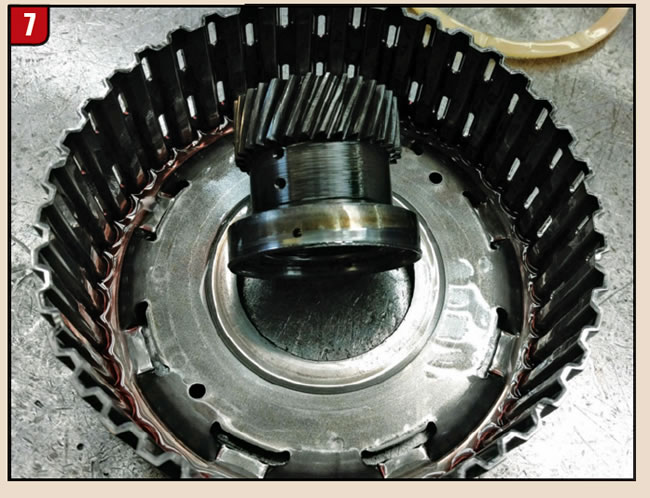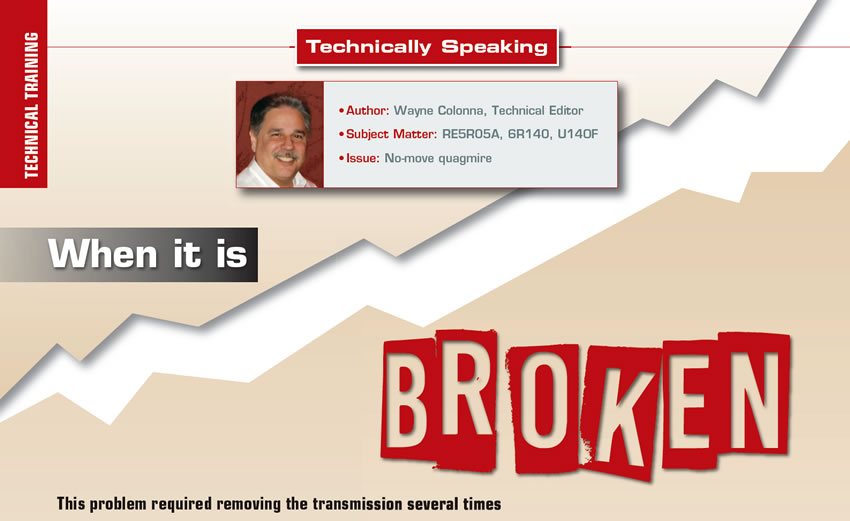
Technically Speaking
- Author: Wayne Colonna, Technical Editor
- Subject Matter: RE5R05A, 6R140, U140F
- Issue: No-move quagmire
This problem required removing the transmission several times
Planetary gear sets and their operation are unappealing for many. Know what is turning and what is holding for each gear can challenge one’s thinking. Particularly so when there are 10 speeds and 3 planetary gear sets involved. I actually enjoy pushing my mind to visualize powerflow and indeed, it can be challenging at times. But it sure does go a long way when trying to isolate a noise problem. It also helps when you have missing gears or no movement. This too helps to know where to look. A perfect example of this is in the Technically Speaking column back in December 2017.
It was with the RE5R05A transmission. The center ring gear is held into the rear planetary carrier with a snap ring. This area of the transmission is often times not disassembled. When the steel ring gear is removed, it will be seen that it has 16 square lugs that fits into the rear aluminum planetary carrier (Figure 1). The aluminum carrier drives the ring gear via the connection it has through these lugs. When these lugs snap off (Figure 2), the powerflow is disconnected from the rear carrier to the middle ring gear, which drives the output shaft through the middle carrier. This results in a no move as well as removing the transmission several times before finding the problem. Knowing powerflow could have found the cause to this problem sooner. What is also helpful is to write articles like this one to let you know of the problem ahead of time. Here are a two more examples you can tuck away in your memory.
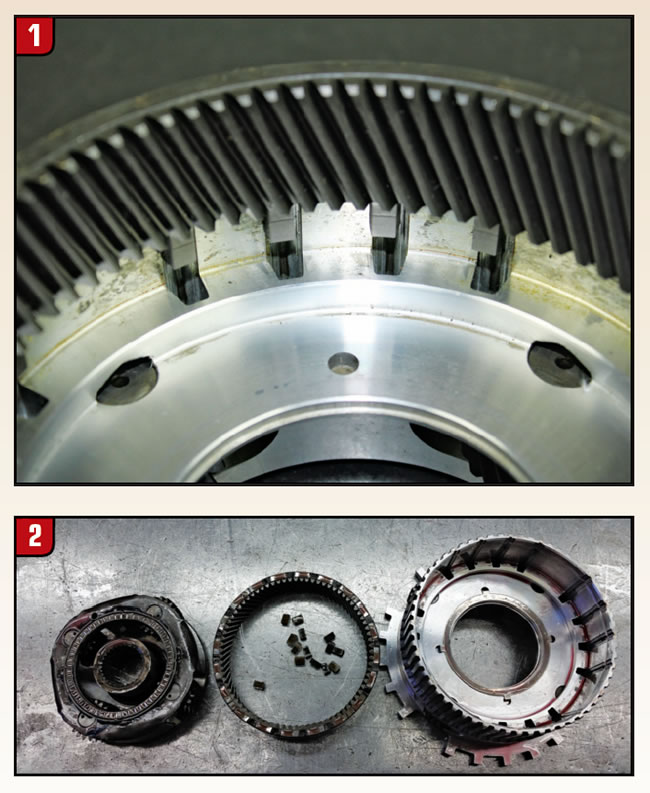
A 6R140 in a 2013 Ford F250 shows up at Jamie’s Transmission Service on a hook. The customer says the truck just stopped moving. It only had 40K on it. Line pressure checked well. With the unit removed and on the bench, all the clutches looked new and no splines stripped. Careful attention was given to the input shaft on the 4-5-6 clutch drum (Figure 3) as well as the converter. Nothing looked cracked or stripped in these areas. It wasn’t until further disassembly took place that the problem was revealed. When the 4-5-6 clutch drum was taken to the press, as the spring return was being compressed, the center shaft moved with the return spring. The snap ring going with the input shaft and return spring made it very difficult to get apart. Figures 4 and 5 show that input shaft broke away from the drum which was being held together by the return spring and snap ring.
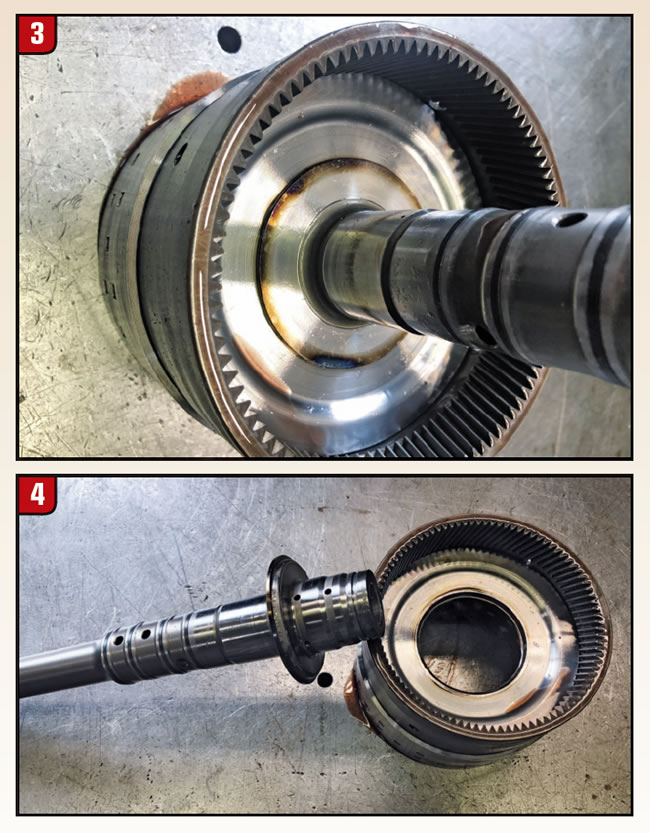

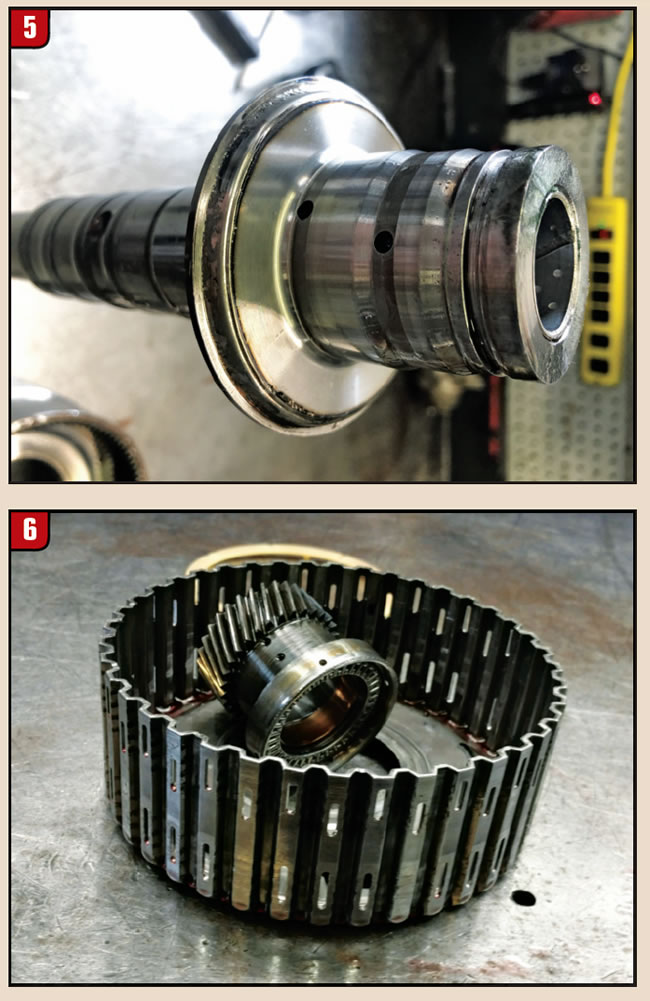
A U140F in a 2002 Lexus RX300 finds its way into Grisham Transmission Center that experienced a sudden loss of reverse and no upshift out of first. A P0750 Shift Solenoid Valve 1 (SL1) Performance Malfunction code was present.
The vehicle had come back a year after the original overhaul. This problem occurred suddenly and the ATF was still bright red. Scan tool data did show that the TRS was functioning properly and a 1-2 shift was commanded when the vehicle was briefly road tested.
The solenoid connector was unplugged and there was still no reverse as well as 1st gear only indicating internal problems. The pan was dropped and clutches were air checked through the case with the valve body removed and of course, no problems were found. The valve body was removed and the SL1 solenoid was replaced. Once installed the problem remained.
When the unit was disassembled, it was discovered that the sun gear in the rear planetary snapped off the hub (figures 6 and 7).
